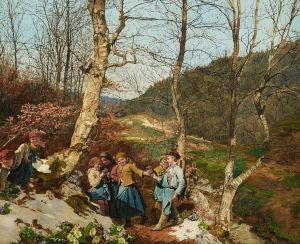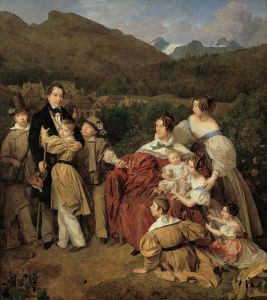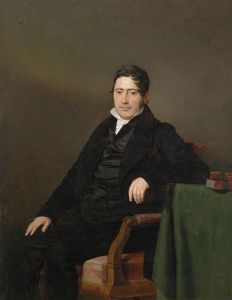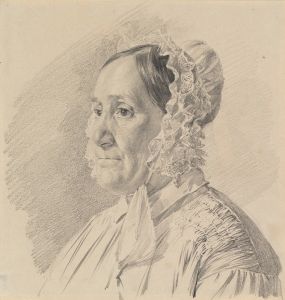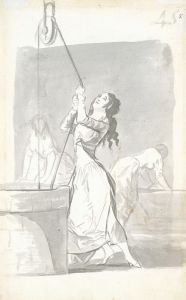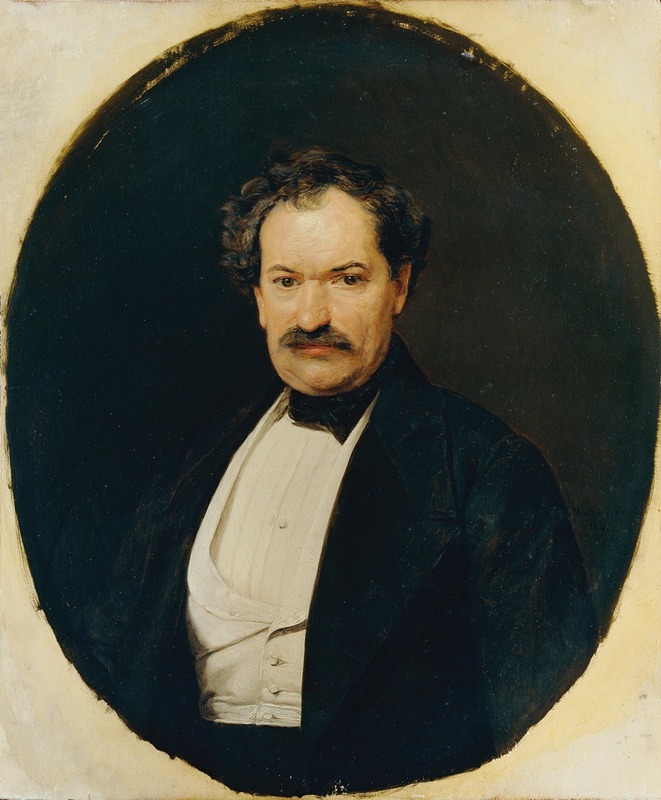
Herr in schwarzem Rock mit weißer Weste
A hand-painted replica of Ferdinand Georg Waldmüller’s masterpiece Herr in schwarzem Rock mit weißer Weste, meticulously crafted by professional artists to capture the true essence of the original. Each piece is created with museum-quality canvas and rare mineral pigments, carefully painted by experienced artists with delicate brushstrokes and rich, layered colors to perfectly recreate the texture of the original artwork. Unlike machine-printed reproductions, this hand-painted version brings the painting to life, infused with the artist’s emotions and skill in every stroke. Whether for personal collection or home decoration, it instantly elevates the artistic atmosphere of any space.
Ferdinand Georg Waldmüller (1793–1865) was an Austrian painter and one of the most prominent figures of the Biedermeier period. Known for his detailed and realistic depictions of everyday life, landscapes, and portraits, Waldmüller’s works often reflect the cultural and social values of 19th-century Austria. Among his numerous paintings, Herr in schwarzem Rock mit weißer Weste (translated as Gentleman in Black Coat with White Waistcoat) is a notable example of his portraiture.
This painting portrays a male figure dressed in formal attire, specifically a black coat paired with a white waistcoat, which was a common style for gentlemen in the early to mid-19th century. Waldmüller’s attention to detail is evident in the precise rendering of the clothing’s texture and the subtle play of light and shadow, which gives the fabric a lifelike quality. The subject’s posture and expression suggest a composed and dignified demeanor, characteristic of Waldmüller’s ability to capture the personality and social status of his sitters.
The painting exemplifies Waldmüller’s mastery of realism and his focus on the individuality of his subjects. His use of light and color enhances the three-dimensionality of the figure, while the neutral background ensures that the viewer’s attention remains on the subject. This approach aligns with the Biedermeier aesthetic, which emphasized clarity, order, and a celebration of the everyday.
While specific details about the identity of the sitter or the exact date of the painting are not widely documented, Herr in schwarzem Rock mit weißer Weste is consistent with Waldmüller’s broader body of work, which often included portraits of the Austrian bourgeoisie and aristocracy. The painting reflects the cultural and artistic values of its time, showcasing Waldmüller’s skill in blending technical precision with a deep understanding of his subjects.
Today, Ferdinand Georg Waldmüller is celebrated as one of Austria’s most important 19th-century painters. His works are held in high regard for their contribution to the development of European realism and their ability to capture the essence of the Biedermeier period. Paintings like Herr in schwarzem Rock mit weißer Weste continue to be studied and admired for their artistic and historical significance.










